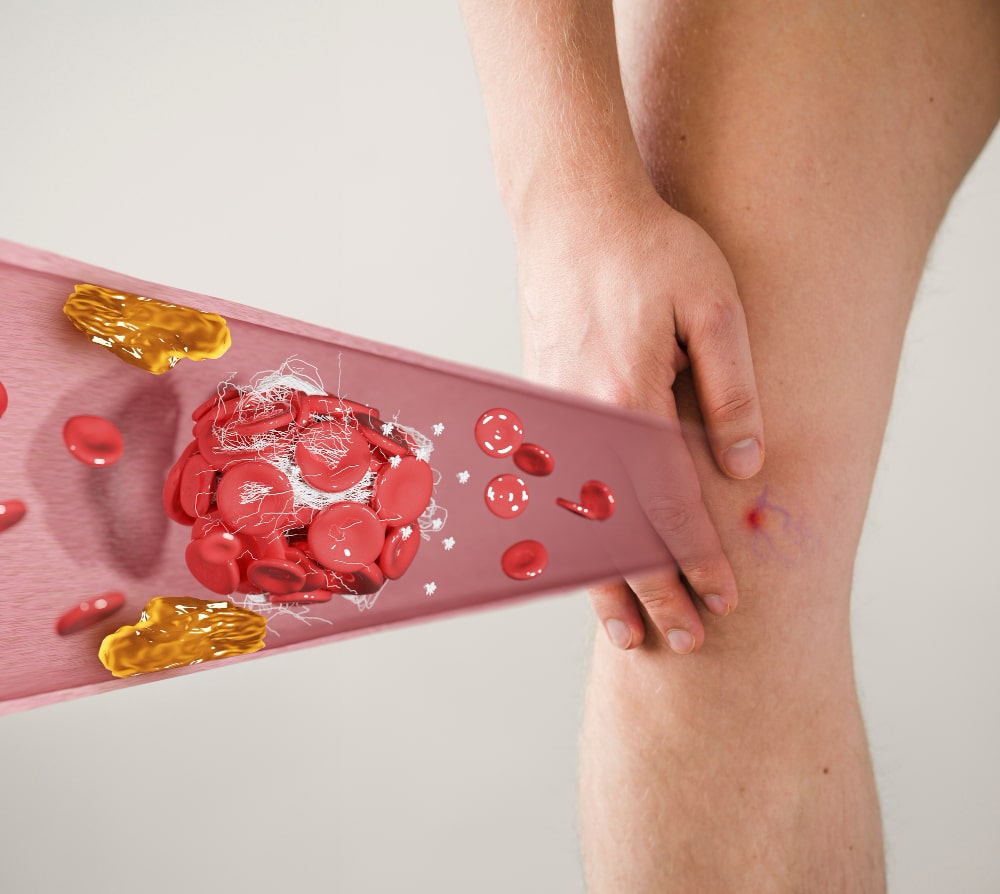
Expert Venous Ulcer Specialists in San Antonio: Comprehensive Care for Healing and Prevention
Venous ulcers, also known aas venous stasis ulcers, are chronic wounds that develop due to improper functioning of the venous valves in the legs. These ulcers can be painful, difficult to heal, and significantly impact the quality of life. In San Antonio, venous ulcer specialists provide comprehensive care tailored to promote healing and prevent recurrence. This article delves into the causes, symptoms, diagnosis, and advanced treatment options available through expert venous ulcer specialists in San Antonio.
Understanding Venous Ulcers
Venous ulcers are wounds that typically form on the lower legs, particularly around the ankles. They result from chronic venous insufficiency, a condition where the veins in the legs fail to efficiently return blood to the heart. When the venous valves become damaged or weakened, blood pools in the lower extremities, leading to increased pressure and the eventual breakdown of the skin, forming an ulcer.
Causes and Risk Factors
Several factors contribute to the development of venous ulcers, including:
- Chronic Venous Insufficiency (CVI): The primary cause of venous ulcers, CVI occurs when the venous valves in the legs are damaged, leading to blood pooling and increased venous pressure.
- Previous Leg Injuries: Past injuries or surgeries in the legs can damage veins, increasing the risk of ulcers.
- Obesity: Excess weight puts additional pressure on the veins in the legs.
- Sedentary Lifestyle: Lack of physical activity can weaken leg muscles, which support venous blood flow.
- Age: The risk of venous ulcers increases with age, particularly in individuals over 50.
- Varicose Veins: Enlarged, twisted veins can disrupt normal blood flow and contribute to ulcer formation.
Symptoms of Venous Ulcers
Recognizing the symptoms of venous ulcers is crucial for early intervention and effective treatment. Common symptoms include:
- Open sores: Ulcers typically appear as shallow, red wounds on the lower legs, often near the ankles.
- Leg pain: The affected area may be painful, especially when standing or walking.
- Swelling: Chronic swelling (edema) in the legs is a common symptom.
- Skin changes: The skin around the ulcer may become thickened, discolored, or itchy.
- Discharge: Ulcers may produce a yellowish or greenish discharge, indicating possible infection.
- Heavy legs: A sensation of heaviness or aching in the legs is often reported by patients.
Diagnosis of Venous Ulcers
Accurate diagnosis is essential for effective treatment. Venous ulcer specialists in San Antonio employ various diagnostic techniques to confirm the presence of venous ulcers and assess the underlying venous insufficiency:
- Clinical Examination: A thorough physical examination helps identify characteristic signs of venous ulcers and assess the extent of the condition.
- Doppler Ultrasound: This non-invasive imaging test uses sound waves to visualize blood flow in the veins and identify any blockages or valve dysfunctions.
- Ankle-Brachial Index (ABI): This test compares blood pressure in the ankle and the arm to rule out arterial insufficiency, which can coexist with venous insufficiency.
- Venography: In some cases, a contrast dye is injected into the veins, and X-ray imaging is used to provide a detailed view of the venous system.
Treatment Options for Venous Ulcers
Venous ulcer specialists in San Antonio offer a range of treatment options tailored to the individual needs of each patient. The primary goals of treatment are to promote healing, manage symptoms, and prevent recurrence.
Compression Therapy
Compression therapy is a cornerstone of venous ulcer treatment. By applying controlled pressure to the legs, compression stockings or bandages help reduce swelling, improve blood flow, and support the healing of ulcers. Various types of compression garments are available, including:
- Compression Stockings: These are specially designed socks or stockings that apply gradual pressure, with the highest pressure at the ankle, decreasing up the leg.
- Compression Bandages: These bandages are wrapped around the leg to provide a consistent level of compression.
- Intermittent Pneumatic Compression Devices: These devices use an inflatable sleeve to apply rhythmic pressure to the legs, enhancing blood flow.
Wound Care
Proper wound care is essential for venous ulcer healing. Venous ulcer specialists in San Antonio provide comprehensive wound care management, which may include:
- Debridement: The removal of dead or infected tissue to promote healing and reduce the risk of infection.
- Dressings: Specialized wound dressings, such as hydrocolloid, alginate, or foam dressings, are used to maintain a moist healing environment and protect the wound.
- Topical Medications: Antimicrobial or anti-inflammatory ointments may be applied to reduce infection and inflammation.
Medications
Medications play a crucial role in managing symptoms and promoting healing. Depending on the individual’s condition, venous ulcer specialists may prescribe:
- Antibiotics: If an ulcer is infected, antibiotics may be necessary to treat the infection.
- Pain Relievers: Over-the-counter or prescription pain medications can help manage discomfort.
- Diuretics: These medications reduce fluid buildup and swelling in the legs.
Surgical Interventions
In cases where conservative treatments are insufficient, surgical interventions may be necessary. Venous ulcer specialists in San Antonio are skilled in a variety of surgical procedures, including:
- Vein Ablation: This minimally invasive procedure uses heat or laser energy to close off damaged veins, redirecting blood flow to healthier veins.
- Vein Stripping: In severe cases, the affected vein is surgically removed.
- Skin Grafting: For large or non-healing ulcers, a skin graft may be applied to cover the wound and promote healing.
Lifestyle Modifications
Adopting healthy lifestyle habits is vital for preventing the recurrence of venous ulcers. Venous ulcer specialists in San Antonio provide guidance on:
- Exercise: Regular physical activity, such as walking or leg exercises, helps improve blood flow and strengthen leg muscles.
- Healthy Diet: A balanced diet low in sodium can help manage swelling and support overall health.
- Weight Management: Maintaining a healthy weight reduces pressure on the veins in the legs.
- Leg Elevation: Elevating the legs above heart level several times a day can reduce swelling and improve blood flow.
The Role of Venous Ulcer Specialists in San Antonio
Venous ulcer specialists in San Antonio play a critical role in providing comprehensive care for patients with venous ulcers. Their expertise ensures that each patient receives a tailored treatment plan that addresses the underlying causes, promotes healing, and prevents recurrence. Key components of their care include:
Personalized Treatment Plans
Each patient’s condition is unique, and venous ulcer specialists develop personalized treatment plans based on a thorough assessment of symptoms, medical history, and diagnostic findings. This individualized approach ensures that treatments are effective and targeted.
Advanced Diagnostic Tools
Specialists utilize state-of-the-art diagnostic tools to accurately assess the severity of venous insufficiency and guide treatment decisions. Doppler ultrasound, ABI, and venography provide detailed insights into the condition of the veins.
Multidisciplinary Approach
Venous ulcer specialists often work as part of a multidisciplinary team, collaborating with wound care nurses, vascular surgeons, and other healthcare professionals. This collaborative approach ensures comprehensive and coordinated care.
Patient Education and Support
Education is a cornerstone of effective venous ulcer management. Specialists provide patients with the knowledge and resources needed to manage their condition, adhere to treatment plans, and adopt healthy lifestyle habits. Ongoing support and follow-up care are also integral to successful outcomes.
The Importance of Early Intervention
Early intervention is crucial for the successful treatment of venous ulcers. Recognizing the symptoms and seeking prompt medical attention can prevent complications and enhance healing outcomes. Delayed treatment can lead to chronic wounds, infections, and reduced quality of life.
Conclusion
Venous ulcers are a challenging condition that requires expert care and comprehensive treatment. In San Antonio, venous ulcer specialists provide advanced diagnostic tools, personalized treatment plans, and ongoing support to promote healing and prevent recurrence. By addressing the underlying causes and implementing a multidisciplinary approach, these specialists ensure that patients receive the highest standard of care.
FAQs
1. What is a venous ulcer?
Answer: A venous ulcer is a type of chronic wound that develops due to improper functioning of the venous valves in the legs. This condition, known as chronic venous insufficiency, causes blood to pool in the lower extremities, leading to increased pressure and eventually the breakdown of the skin, forming an ulcer.
2. What are the common symptoms of venous ulcers?
Answer: Common symptoms include open sores on the lower legs, especially around the ankles, leg pain or cramping, swelling, skin changes such as thickening or discoloration, discharge from the wound, and a sensation of heaviness in the legs.
3. Who is at risk for developing venous ulcers?
Answer: Individuals at higher risk include those with chronic venous insufficiency, a history of leg injuries or surgeries, obesity, a sedentary lifestyle, older adults, and those with varicose veins. Smoking and a family history of venous disease also increase the risk.
4. How do venous ulcer specialists diagnose venous ulcers?
Answer: Diagnosis typically involves a clinical examination, Doppler ultrasound to assess blood flow and identify vein dysfunction, the Ankle-Brachial Index (ABI) to rule out arterial insufficiency, and sometimes venography to get a detailed view of the venous system.
5. What treatments do venous ulcer specialists in San Antonio offer?
Answer: Treatments include compression therapy, wound care (such as debridement and specialized dressings), medications (antibiotics, pain relievers, and diuretics), and surgical interventions like vein ablation, vein stripping, and skin grafting. Specialists also emphasize lifestyle modifications like exercise, healthy diet, weight management, and leg elevation.
6. What is compression therapy, and how does it help with venous ulcers?
Answer: Compression therapy involves using compression stockings, bandages, or intermittent pneumatic compression devices to apply controlled pressure to the legs. This pressure helps reduce swelling, improve blood flow, and support the healing of ulcers.
7. Are venous ulcers curable?
Answer: While venous ulcers can be challenging to treat and may recur, with proper management and treatment, they can heal. Early intervention, consistent treatment, and lifestyle modifications are crucial for healing and preventing recurrence.
8. What role do lifestyle changes play in managing venous ulcers?
Answer: Lifestyle changes such as regular exercise, maintaining a healthy diet, losing excess weight, and avoiding prolonged periods of standing or sitting can significantly improve venous health, promote healing, and reduce the risk of recurrence.
9. How important is early intervention in treating venous ulcers?
Answer: Early intervention is critical for effective treatment and preventing complications. Prompt diagnosis and treatment can enhance healing outcomes, reduce the risk of infection, and improve the patient’s quality of life.
10. Can venous ulcers be prevented?
Answer: While not all venous ulcers can be prevented, many can be avoided by managing risk factors. Regular exercise, maintaining a healthy weight, wearing compression stockings if recommended, and avoiding prolonged periods of immobility can help reduce the risk.


